It’s no shocker that the no contact rule is THE most popular post breakup tactic but there always seems to be this fear revolving around it that it won’t if you have excessively begged or pleaded for your ex back after a breakup.
Well, I’m here to tell you that the no contact rule is probably one of the best things you can do if you begged or pleaded for your ex back.
And I’m going to prove it by discussing,
- The major problem with NOT doing a no contact rule after begging of pleading
- The major benefits to actually doing one
- Looking at some real live case studies of people who have used no contact after begging and pleading
- Giving you my three best tips to keep in mind when implementing a no contact rule
Alrighty, let’s get to it!

What Are Your Chances of Getting Your Ex Boyfriend Back?
Take the quizThe Problem With Not Doing A No Contact Rule After Begging Or Pleading
The biggest problem with not doing a no contact rule after begging or pleading actually has to do with the most common pairing that we see amongst our coaching practice.
So in our coaching practice, we’re really big on attachment styles.
You can just simply look at some of the previous articles that I’ve written and see that pretty much in every single one of them, I make reference to the fact that most of our clients statistically have what is considered an anxious attachment style,
While most of their exes have what’s considered an avoidant attachment style.
Now, in order to differentiate between these two, it’s best to look at their core wounds.
Core Wound = Basically the thing that constantly triggers the anxious or avoidant behaviors.
- So for someone who has an anxious attachment style, their core wound is going to revolve around a fear of abandonment. So anything that happens where they get a sense or a worry that their partner is going to leave them, this often causes the anxious person to exhibit anxious types of behaviors.
- The avoidant on the other hand is essentially on the other end of the spectrum. They’re all about independence. So their core wound revolving around independence, essentially in a relationship, anything that makes an avoidant feel as if they’re losing their independence will often create or cause avoidant behavior.
In fact, avoidance account for most of the exes that we see here in our coaching practice. It became such a huge talking point that I actually went out and created a special relationship cycle that I’ve found avoidance typically go through. This graphic right here is something that I like to lovingly refer to as the avoidant death wheel.
There are eight main stages to it.
- It starts out with the avoidant wanting someone to love them.
- Then they find someone and convince themselves that all of their problems are over.
- Then they start noticing some worrying things, often these worrying things being anxious behavior from their partner.
- This causes them to start thinking of leaving,
- Which in turn causes them to actually leave.
- Then they’re incredibly happy that they’ve left.
- Then they start to feel a little bit of loneliness
- Then they begin to feel regret, and wonder, “Why can’t I ever find the right person?”
Understanding this graphic, I think, is important to helping us understand why the no-contact rule can be effective if you have begged or pleaded with your ex before using a no-contact rule.
One of the core reasons that an avoidant person will break up with an anxious person really revolves around stage three of this wheel: the “I’m noticing some worrying things” stage.
Like I said, the worrying things that avoidants often notice are the fears of abandonment that their partner is exhibiting, which in turn makes them feel as if they’re losing their independence.
So the dynamic typically unfolds like this: the anxious person, when they enter a relationship, constantly needs reassurance because they’re always afraid of being left. But this almost becomes a self-fulfilling prophecy where the constant need for reassurance ultimately triggers the avoidant, and the avoidant starts looking for a way out.
Now, when the breakup inevitably occurs, the anxious person is actually the most likely to beg for their ex back.
Unfortunately, all this does is reinforce why the avoidant left in the first place: “See, they haven’t changed. I knew this was the right decision.”
This is where stage six comes into play, known as the “separation elation” stage – the “I’m so happy that I left, I made the right decision” phase. \

What Are Your Chances of Getting Your Ex Boyfriend Back?
Take the quizTypically, when the avoidant reaches stage six post-breakup, they feel really self-assured about their decision. This is when most of the begging and pleading from the anxious person happens, which just reinforces the avoidant’s belief that they made the right decision.
Where the no-contact rule is so effective is that it actually aids the transition from stage six to stage seven.
So, rather than begging for an ex back, pleading for them to return, or trying to argue why the breakup was a poor decision, you implement a no-contact rule. You give the avoidant space, which in turn leads them into stage seven, where they start to feel a bit of loneliness.
Contrary to popular belief, an avoidant does want a relationship; they just desire this peculiar, wonky relationship where they don’t necessarily have to be present all the time. Therefore, one of the major benefits of the no-contact rule is that it actually facilitates this transition from stage six to stage seven of the avoidant death wheel cycle.
The Major Benefits To The No Contact After Begging
There are obviously some major benefits to implementing a no contact rule after begging.
- Emotional Healing
- Self-respect and Dignity
- Fear of Loss
- Reflection and Growth
Let’s take a beat and talk about each of these for a moment.
Emotional Healing:
The time apart from you and your ex not only gives you time to start rebuilding yourself and actually working on transitioning your potentially anxious attachment style into a more secure one but also gives your ex the space they need.
One of the common mantras that we have here in our coaching practice is, “when they pull back, you pull back.”
This is actually common sense to most people, but when you actually put yourself in an actual relationship, it becomes very difficult because emotions get involved.
Adding the fact that you and your ex were together for maybe a long period makes you feel as if you’re different than the average girl or guy that is hitting on your ex. When the reality is, after the breakup, you’re not.
So, time apart not only helps you heal but also gives your ex time to heal. Really, what your ex needs, especially if they’re a dismissive avoidant, is space, and the no-contact rule essentially provides that. It can also help you regain your self-respect and dignity.
Self Respect And Dignity
Think of it like this: any self-respect that your ex may have had for you might have completely gone out the window the moment you started begging or pleading to get them back.
Like I said, oftentimes begging or pleading after a breakup just reinforces their decision to break up with you and prolongs stage six, the “separation elation” stage, the “self-assured of their decision” stage.
But by giving them space, by implementing a period of no contact, it helps restore your self-respect and dignity. It also signals to your ex that something’s different: “They’re not begging like I was expecting them to.” That’s one of the things that I always try to tell my clients who are going through a breakup for the first time and are asking me, “What’s the best way to handle this breakup?”
My answer is always the same: do nothing. Don’t overreact. Go immediately into the no-contact rule. Act as if the breakup didn’t bother you at all because what you’re really doing is giving the dismissive avoidant space, but also saying with your silence that maybe this relationship wasn’t as meaningful to you as they thought it was.
When the reality is, it probably was meaningful to you, but perception is half the battle here.
Fear of Loss
Another benefit of implementing a no-contact rule after begging is that it can be effective at creating a fear of loss.
I talk a lot about psychological reactance with the no-contact rule and how much of the fanfare regarding the no-contact rule revolves around this idea that you’re taking away your ex’s behavioral freedom of talking to you.
Once that loss has occurred, they start to react in ways to try to regain that. Moreover, silence is powerful in creating a fear of loss because, by not doing anything, by not providing a window into your life, your ex starts to wonder if you’re beginning to move on or if you’re dating someone else.
We know from research that avoidants not only want space but also desire an environment where they don’t have to worry about you trying to get them back. They’ll actually feel a nostalgic reverie when they think you’ve moved on to someone else, so creating a bit of fear of loss can be a really effective approach.

What Are Your Chances of Getting Your Ex Boyfriend Back?
Take the quizReflection And Growth
Then, of course, you have the reflection and growth aspect of it. I talk a lot about the concept of the “holy trinity”, not anything biblical, but essentially examining your life during the no-contact period and dividing it into three specific categories: health-based categories, wealth-based categories, and relationship-based categories.
The whole point of this exercise is, during the no-contact rule, to focus your time on yourself by improving these categories, instead of concentrating all your attention on your ex.
The ultimate goal with the trinity is to create a constant balance where you’re always allocating your time equally amongst the three categories.
Of course, what I know, and what you’ll soon realize, is that achieving true balance is impossible.
But what we’re trying to do is adopt the samurai approach: striving to achieve perfection with the understanding that perfection is unattainable. So, every day is about striving to be better and better, which is how you accomplish things successfully in life.
Looking At The Experience Of Someone Who Actually Begged And Then Did A No Contact Rule
But what I would like to do now, to kind of back up these points that I’m making, is to show you a few examples of people who have come through our program and who have begged for their exes back, and used the no-contact rule successfully, and actually hear what they have to say about it.
Now, I’ve had lots of success stories over the years of people who have begged and used the no-contact rule successfully, like in this video here where I interviewed Sophie, who basically did everything possible wrong.
She begged for her ex back, made all sorts of mistakes not sticking to the no-contact rule, but it was actually a comment that I found in our community that I think better reflects the experience of what this approach can do for you.
My ex fiancé and I broke up in February.
It literally destroyed me.
Couldn’t eat, sleep, function for the better part of 3 months.
I gnatted, begged, made a complete ass out of myself (more than once)
I had zero EC.
2 months after our break up he was in another relationship.
I hard blocked him. On everything.
I know that’s not part of the rules, but it physically gave me pain to see him with someone else.
No contact for almost 5 months.
Shut him out of everything.
And I grew…
Got my shit together: mentally, physically, and spiritually.
I actually started to like me again.
Flash forward 2 weeks ago.
We both are musicians and play the same venues often. We had a mutual gig (during the 5 months if we had the same show, I wouldn’t even look at him, I’d ignore him as if he wasn’t even there. Do my gig, and leave.) he came up to me after the show and sincerely apologized, said he was sorry, and that he had made a mistake.
We have been talking and hanging out every since.
My EC and UG status are on point, I’m not begging, chasing, or freaking out (outwardly) if he doesn’t call.
We made plans to go see his father out of town today.
Before?
I would be the one checking in with him first, asking if we were still going and all the details. Mothering him, smothering him.
Now?
I just chill and go with the flow. And 9/10 times? He’s the one initiating contact and making plans for us.
If we work out- great.
If we don’t? I am finally at a place where that will be okay too.
I have worth and value either way.
And to be honest? He’d be a compete dumb ass to mess this up.
Work on yourselves first ladies.
Let time do it’s thing and trust the process.
It works.
So, I want you to notice how this person really focused on themselves during the no-contact rule, and they did the one thing that I’m always telling my clients to do: they outgrew their ex during the no-contact period.
This may seem like a weird concept, but it also aligns with what we know to be true about avoidant behavior.
Avoidants don’t begin to really miss you until they feel like you have outgrown them or moved on from them, and that’s essentially what this person did. And now, wow, look at how their ex has done a complete 180.
So, if we buy into this idea that the no-contact rule is one of the best strategies that you can use if you’ve begged or pleaded for your ex back, I think it would behoove us to examine some of the best tips that can keep you on track.
Best Tips To Implement A Successful No Contact Rule
Here are the best tips to keep in mind when you want to implement a successful no-contact rule.
Tip #1: Find Something You Are As Passionate About As Your Ex
I often talk about this concept of a “magnum opus,” where it’s really important to live for more than just your ex.
One of the unfortunate things that we, as a coaching practice, have noticed is that a lot of our clients tend to have codependent tendencies.
They tend to be in codependent relationships. Many of them cannot fathom a world where they can live without their exes, and even fathoming a world like that frightens them.
But it’s really important that we get out of this codependent behavior and start finding something that you’re just as passionate about because you’re going to really struggle with the no-contact rule if your entire world is revolving around your ex, as silence is only going to exacerbate that.
So, let’s say that your entire world revolves, not necessarily around your ex, but orbits around something else that is healthy and fits into the trinity. All of a sudden, now you have something to do with your time during this period of silence other than obsess about your ex.

What Are Your Chances of Getting Your Ex Boyfriend Back?
Take the quizTip #2: Keep in mind that every failed no contact attempt lowers its effectiveness
This should be obvious, but you’d be surprised at how many people don’t consider this when breaking the no-contact rule.
They are always in the mindset of, “Well, my situation is unique; my situation is different, so that’s not going to happen to me.” But what I have found to be true is that if you implement a no-contact rule, it’s going to be effective the first time.
But if you break it midway through and then have to start over again, it’s not as effective as the first time; its effectiveness lowers. And that just continues to go on – if you break it the third time, it’s less effective; the fourth time, even less effective.
I think the important thing to remember here is that it kind of goes back to that anxious behavior that we were talking about at the beginning of this discussion. If you’re constantly breaking the no-contact rule, what you’re signaling to your ex is that you don’t have the discipline or the necessary understanding to give them space.
So, instead, they start perceiving that as anxious behavior.
Tip #3: Change your exes name in your phone to remove reminders
Tip number three is something kind of unique, which is to change your ex’s name in your phone to remove reminders. I’m going to actually attach a couple of examples of people in our community who have done this here.
For instance, this person changed their ex’s name to “ERP,” which stands for Ex Recovery Program.
Another person changed their ex’s name to “Potato.”
I’ve seen people change their ex’s name to mean things like “Cockroach” or “Stupid Head,” or, I don’t know, I’m just making names up at this point. But the main point is, it’s a reminder for you that, when they eventually reach out – if they eventually reach out – during the no-contact rule to try to get you to break it and respond to them, it’s a reminder for you not to contact them.
My recommendation would be to change their name to “Do Not Contact,” so you have an extra check there. But even removing the reminders by changing their name in your phone isn’t necessarily going to be enough to stop you from breaking the no-contact rule.
You ultimately have to show some level of discipline. This is almost just like a warning not to do it.
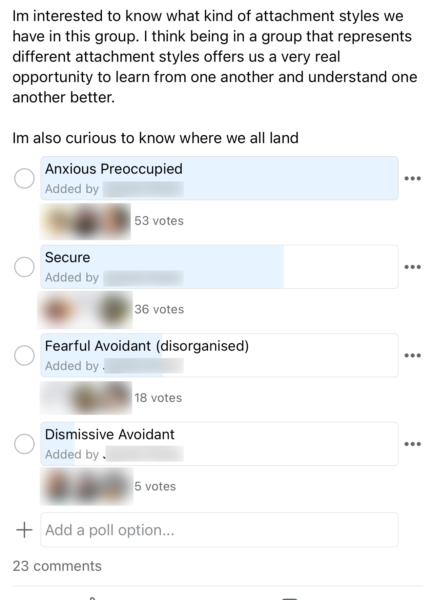
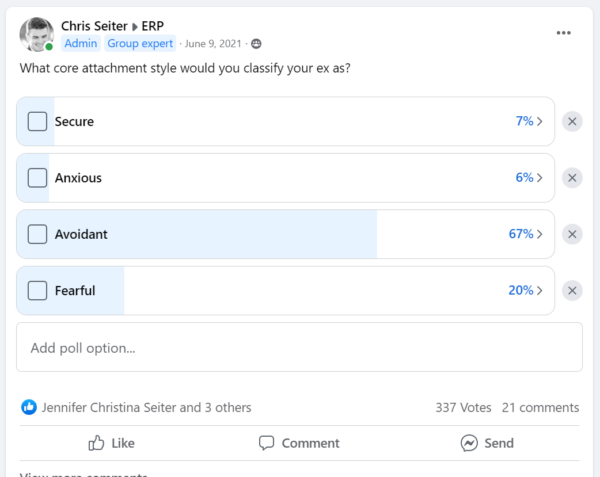
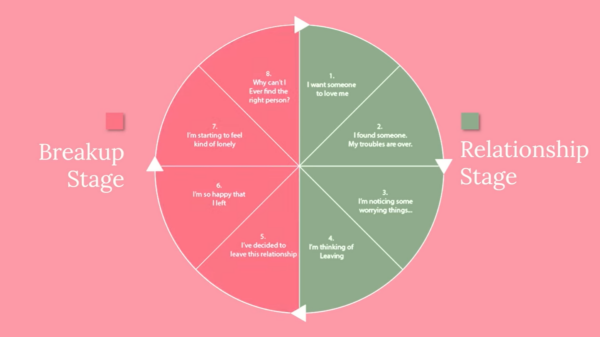
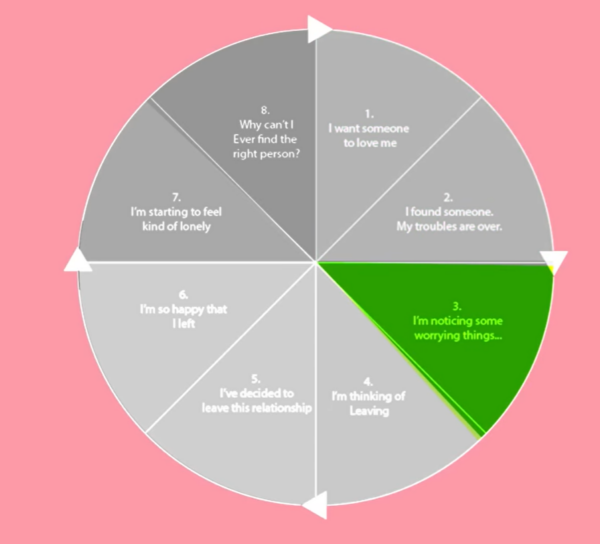
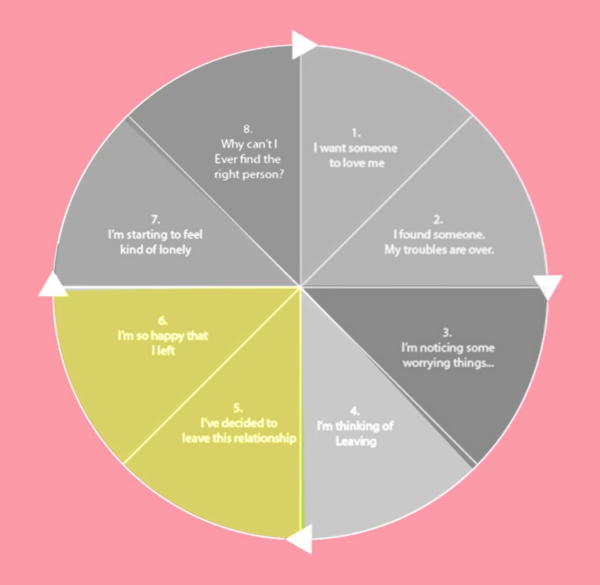
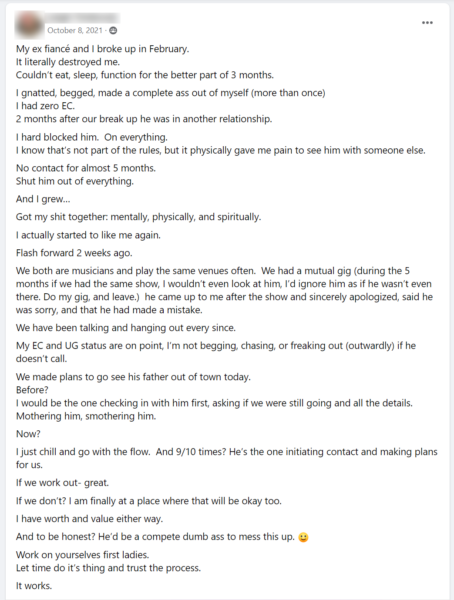
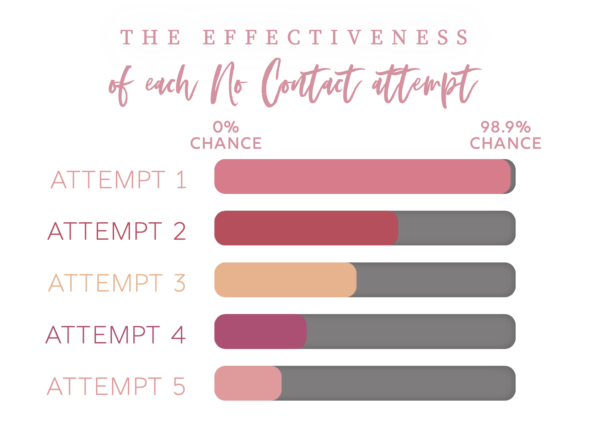
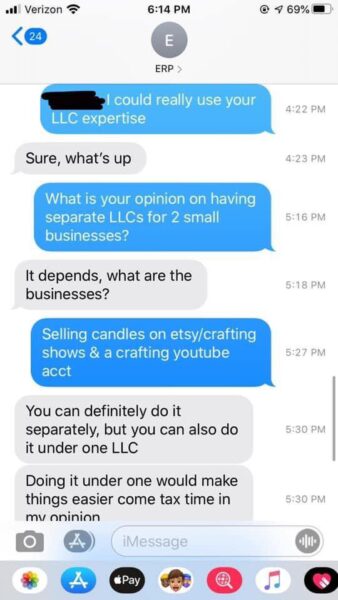

Daniela
December 9, 2023 at 4:34 am
I unfortunately broke things on the heat of the moment because I felt unappreciated by due to his avoidant personality. I Proceeded to block him on WhatsApp. He wrote via message “don’t you ever text me bye” . I begged for us to talk and he ended blocking me everywhere . I feel extremely sad and I’ve been crying a lot but I took matters into my hands by scheduling my first therapy session and some personal development. Since he blocked the no contact is enforced by his will. I hope we can patch things up tho but I ll see. And I changed his name on my contacts and I deleted his messages .